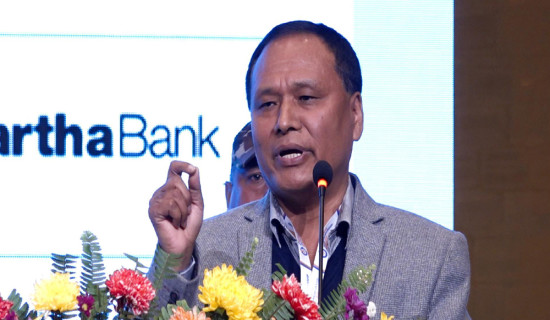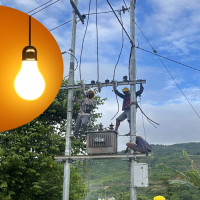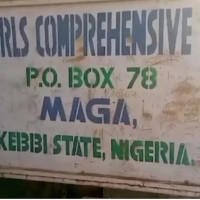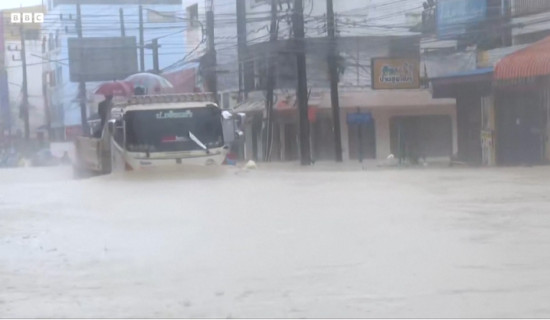- Wednesday, 26 November 2025
Gorkhapatra Gaining Ground
For a change, I have decided to write in The Rising Nepal on the Gorkhapatra daily. This is something that has happened perhaps for the first time. The same is true of the Gorkhapatra, that has yet to carry a comprehensive opinion piece on its sister publication, The Rising Nepal, which is the country’s first broadsheet daily in English as well as the first of existing kind.
Gorkhapatra has a history of being appreciated by all governments since the dawn of democracy in 1951. A cursory glance at the anniversary editions of the country’s first newspaper that debuted in 1905 finds all governments lauding its role in the media landscape. One of the largest news publications, the daily, without any interruption, accounts for contributing to the state exchequer the highest revenue by any media group.
In Kathmandu Valley alone, there are nearly 20 broadsheet dailies circulating in the market. Press Council Nepal lists no less than 3,000 other regular publications.
No easy task
The Gorkhapatra Sansthan’s two daily newspapers, including The Rising Nepal, and three other monthly magazines (Madhupark, Yuva Manch and Muna) have no easy task maintaining their space at reasonable levels in the ensuing times that in probability will see drastic shrinkage in the public presence of print journalism. A democratically functioning government should shed any inhibition about strengthening the largest publishing house’s public credibility.
Whereas Gorkhapatra is easily one of the top newspapers in terms of copy sales, the Press Council Nepal grades The Rising Nepal in Category A. Moreover, Madhupark, the youth-oriented Yuva Manch and the children-focused Muna are indisputably the largest circulation monthly magazines since their inception. However, the fact that three periodicals continue struggling for advertising is a telling tale of the print media, even if their large readership is a glowing public tribute to the services rendered.
Crowdfunding is yet to make any impressive role in the media landscape, just as online news continues to shy away from setting up paywalls. Only highly quality content can erect paywalls as financially successful ventures. This requires capable staff members in the newsroom for coming up with stories for both class and mass readership.
Without steady financial backing for adequate infrastructure, a publication loses mass visibility. Academic institutions and organisations of public variety can come forward to chip in their contributions to the cause they cannot deny. Business organisations are also potential sources of support, as demonstrated in many other democracies.
The younger generation of readers is migrating in droves to other content channels. Although the Gorkhapatra and TRN’s online news portals are making steady progress, the days of paywalls' returns are yet to make any big entry in Nepal.
Ownership issue
Private ownership does not automatically guarantee professionally independent and fair journalism. Under an authoritarian regime, government media more often than not are geared to serving the rulers with hardly any effort at invoking critical faculties. Regular public opinion surveys show that the majority of people in more than 50 leading democracies do not trust their media. As such, the predicament of organisations lacking adequate infrastructure but with skeletal and underpaid staff members can be gauged.
State-run broadcast media operate in almost all democracies. Some democracies, lauded for fair journalism and upholding professional integrity, are known for funding and providing technical assistance to information platforms and news outlets, government-owned or otherwise.
Surendra Kumar Karki, as Minister for Information and Communications, was quoted in the Gorkhapatra (December 22, 2016) as saying, “State-run news media are still needed... When an event occurs, the next day five newspapers report it in five different ways… Gorkhapatra is needed for such a situation.”
Scope for improvement
Taboos wear off gradually but noticeably. Front-page stories should be more diverse in datelines and issues, places and personalities. Critical analyses, or in-depth stories, should increase in volume and variety as well as places of origin for addressing nationwide interests. Editorials and opinion pieces could be critical of public institutions involved in verified lapses and scams.
Instead of taking the safest route even if at the expense of professional dignity and public credibility, a united newsroom’s concerted efforts can do many things, including mobilisation and coordination of its scores of stringers and regular correspondents in provinces and districts.
This novice reporter, who joined the TRN newsroom back in the summer of 1973 and worked for 22 years, was fortunate to have rubbed shoulders with and learnt from the workings of Gorkhapatra stalwarts like editor Gopal Prasad Bhattarai, the ace humourists and satirist duo Bhairav Aryal and Keshav Raj Pidali, Narayan Bahadur Singh, editors Bharat Dutt Koirala, Gokul Prasad Pokharel, another humourist and satirist, Balmukunda Dev Pandey, Krishna Bhakta Shrestha and a posse of others.
Gorkhapatra carried many of my stories, originally written in English, and I translated for TRN hundreds of news items prepared by Gokul Prasad Pokharel, Mukunda Parajuli, Puru Risal and Kedar Adhikari in the 1970s. But I have been able to contribute only a lone article to the grand old daily’s opinion page sometime in 1974-75.
Stellar work
Bharat Dutt Koirala and Shrish S. Rana in the 1980s can be singled out for special contributions in their capacities as Gorkhapatra Sansthan’s executive chairman. While Koirala introduced the offset press for the first time in printing newspapers, Rana revamped administration and finance sections and introduced computers in the newsroom, with special financial incentives to all editorial staff members willing to attend training classes.
Among others, after the 1990 restoration of multiparty democracy, Kishore Nepal, Sushil Koirala and the current chairman-general manager duo, Bishnu Prasad Subedi and Lal Bahadur Airi merit special mention.
A reputed journalist having headed several prominent newspapers, Kishore Nepal made visible efforts at improving the editorial contents and achieved a milestone in initiating the construction of a new and well-planned office building adjoining the earlier, near-dilapidated building. Sushil Koirala boosted revenue collection and ensured a more efficient arrangement for gratuity and other payments to retired employees. Subedi and Airi are an example of how two dynamic minds can work together in newspapering and marketing for effective results, including relentless push for amending regulations pertaining to employees’ service and career-graph.
Gorkhaptara in the past couple of years, particularly in the recent months, has produced many good stories both on the front and inside pages, the like of which were rare previously. News items originating outside Kathmandu Valley, too, are of better quality. One cannot overlook the editorial team’s appreciable work under chief editor Shiva Kumar Bhattarai. But current achievements should be only a beginning, as many more miles are to be covered for continued relevance in a basically shrinking world of print media.
(Professor Kharel specialises in political communication.)

















